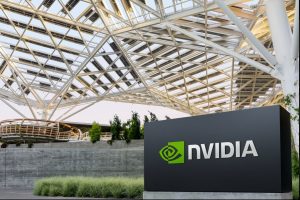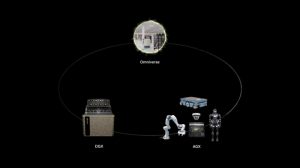SANTA CLARA — NVIDIA’s Isaac™ robotics platform is rapidly becoming the cornerstone of innovation in the robotics industry, with industry giants like BYD Electronics, Siemens, Teradyne Robotics, and Intrinsic (an Alphabet company) leading the charge. At the forefront of this revolution, these companies are harnessing the power of NVIDIA’s advanced robotics technologies to develop the next generation of AI-enabled autonomous machines and robots.
The adoption of the NVIDIA Isaac platform signals a pivotal moment in the evolution of robotics, as industries worldwide seek to enhance efficiency and safety in their operations while empowering human workers with intelligent assistants for specialized tasks.
Jensen Huang, founder and CEO of NVIDIA, emphasized the significance of this shift, stating, “The era of robotics has arrived. Everything that moves will one day be autonomous.” NVIDIA’s commitment to advancing generative physical AI is evident in its comprehensive robotics stack, which includes groundbreaking technologies such as Omniverse for simulation applications, Project GR00T humanoid foundation models, and the Jetson Thor robotics computer.
Key components of the NVIDIA Isaac platform include:
- NVIDIA Isaac ROS: Modular ROS 2 packages bringing NVIDIA-accelerated AI models to ROS community developers.
- NVIDIA Isaac Perceptor: Providing multi-camera, 3D surround-vision capabilities for AI-based autonomous mobile robots.
- NVIDIA Isaac Manipulator: Simplifying development of AI-enabled robot arms for seamless interaction with their environments.
- NVIDIA Isaac Sim™: Allowing for simulation, testing, and validation of robots in physically based environments.
- NVIDIA Isaac Lab: Optimized for reinforcement, imitation, and transfer learning for AI robot foundation model training.
The expansion of the Isaac ecosystem is driven by collaborations with industry leaders across Asia, Europe, and North America. Siemens, for instance, leverages NVIDIA Isaac Sim for advanced robotics skills development, while Intrinsic explores scalable robotic-grasping solutions. BYD Electronics focuses on autonomous mobile robots for logistics applications, aiming to enhance worker safety and production intelligence.
Meanwhile, Universal Robots (UR) and Mobile Industrial Robots (MiR), both Teradyne Robotics companies, integrate NVIDIA Isaac to infuse AI into automation. UR integrates Isaac Manipulator for new cobot solutions, while MiR utilizes Isaac Sim for realistic simulations of its Pallet Jack.
The modular nature of the NVIDIA Isaac platform allows companies to adopt individual or multiple technologies based on their specific needs. From perception-based autonomous mobile robots to AI-based robotic arms, over 100 companies are already leveraging Isaac technologies for innovation across various industries.
At COMPUTEX, Huang showcased the tangible impact of robotics innovation, with demonstrations spanning transportation, healthcare, and industrial manufacturing. Foxconn, for example, presented a fully simulated autonomous factory in NVIDIA Omniverse, featuring fleets of AI robots developed by NVIDIA’s partners.
The widespread adoption of the NVIDIA Isaac robotics platform underscores a collective effort within the industry to push the boundaries of innovation and drive tangible solutions for real-world challenges. As robotics continue to evolve, NVIDIA remains at the forefront, empowering companies to unlock the full potential of autonomous machines and revolutionize industries worldwide.



















